Spanish/Cuban cutacha


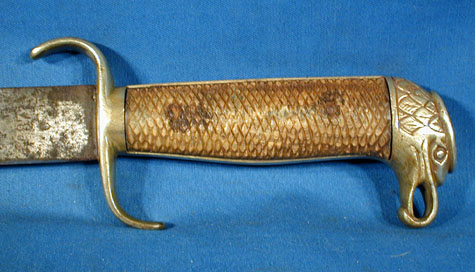
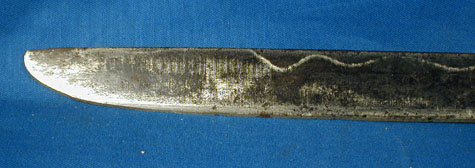
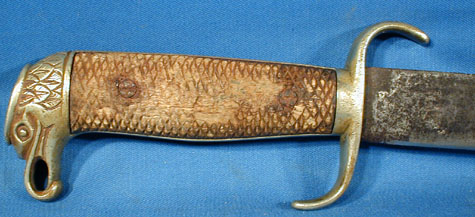
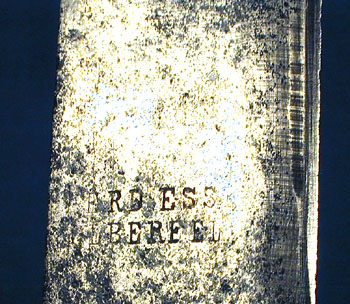
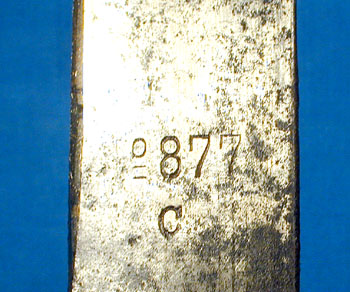


length: 32 1/8"
Most likely a Cuban officer's sidearm from the Spanish-American War. Initial
identification comes from "Collins: machetes and bowies, 1845-1965",
which shows the Collins version of this machete and states that theirs was
copied from a Spanish/Cuban weapon.
identification note received 10/18 from CR, one of the world's leading
experts on this time/area of swords:
"The item under discussion was not Cuban as such which is a
misunderstanding
of the governmental structure. It was a standard military pattern used by
the Spanish Army in Cuba, an entity in its right. Other edged tool-weapons
were used in metropolitan Spain and in Africa for similar purposes. All
approved patterns were marked "Machete Reglamentaro"; some have outfitter's
marks on them proving they were sold to officers and not issued to EMs. The
issue patterns are plainer and were only for senior NCOs. The troops carried
plain "machete de montes". Or on horseback Collins #22s and their clones by
other makers.
A thing that is interesting about the Spanish military pattern cutachas (BTW
a Centroamericano term not used in Cuba, but which appears in USMC Small
Wars Manual and South American diccionarios, not in Mexico or Cuba.)is that
no matter where the hilts were cast they all appear so close that the makers
must have been furnished a master mold by the Spanish military. The one you
show there has been heavily used and the edge has been altered from a chisel
to an axe grind. The tip has been reshaped from a slant point to the form as
seen now. The no. 877 is the stock number and is deliberately referential to
the Collins pattern #87 which is identical to foreign made pieces.
The one you have was made by Fernando Esser in Elberfeld, Germany. Cutachas
were carried more as a symbol of office than as a weapon and were in civil
life used by planters and overseers to whack surly peasants with. Thus the
chisel edge which would cut just bruise. Actually the side of the blade was
used by police to whack miscreants.
Intended to be hurtful but non-lethal. (Killing peasants is like killing
slaves. Not only inhumane but bad economics. After all a good slave in the
old south cost $500 which was a goodly sum in those days.) A cutacha's
practical purpose is like the lathis used by the police in India to beat up
riotors."
This is now a fully identified ex-whatsit. Thanks, C!
blade: 26 3/4"
blade width: 1 1/4"
grip: 5 1/4"
guard: 3"
weight: 1 lb 11.5 oz

